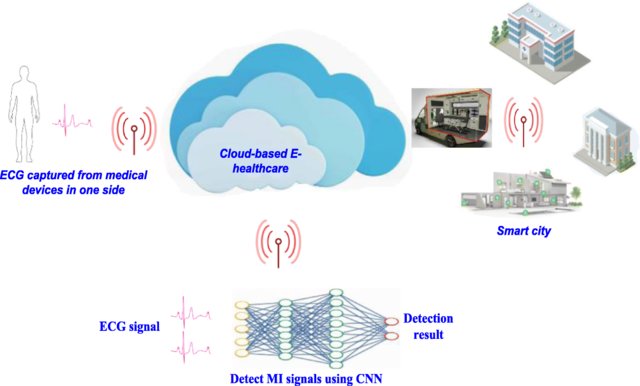

Detection of myocardial infarction based on novel deep transfer learning methods for urban healthcare in smart cities
One of the common cardiac disorders is a cardiac attack called Myocardial infarction (MI), which occurs due to the blockage of one or more coronary arteries. Timely treatment of MI is important and slight delay results in severe consequences. Electrocardiogram (ECG) is the main diagnostic tool to monitor and reveal the MI signals. The complex nature of MI signals along with noise poses challenges to doctors for accurate and quick diagnosis. Manually studying large amounts of ECG data can be tedious and time-consuming. Therefore, there is a need for methods to automatically analyze the ECG data and make diagnosis. Number of studies has been presented to address MI detection, but most of these methods are computationally expensive and faces the problem of overfitting while dealing real data. In this paper, an effective computer-aided diagnosis (CAD) system is presented to detect MI signals using the convolution neural network (CNN) for urban healthcare in smart cities. Two types of transfer learning techniques are employed to retrain the pre-trained VGG-Net (Fine-tuning and VGG-Net as fixed feature extractor) and obtained two new networks VGG-MI1 and VGG-MI2. In the VGG-MI1 model, the last layer of the VGG-Net model is replaced with a specific layer according to our requirements and various functions are optimized to reduce overfitting. In the VGG-MI2 model, one layer of the VGG-Net model is selected as a feature descriptor of the ECG images to describe it with informative features. Considering the limited availability of dataset, ECG data is augmented which has increased the classification performance. A standard well-known database Physikalisch-Technische Bundesanstalt (PTB) Diagnostic ECG is used for the validation of the proposed framework. It is evident from experimental results that the proposed framework achieves a high accuracy surpasses the existing methods. In terms of accuracy, sensitivity, and specificity; VGG-MI1 achieved 99.02%, 98.76%, and 99.17%, respectively, while VGG-MI2 models achieved an accuracy of 99.22%, a sensitivity of 99.15%, and a specificity of 99.49%. © 2020, Springer Science+Business Media, LLC, part of Springer Nature.



